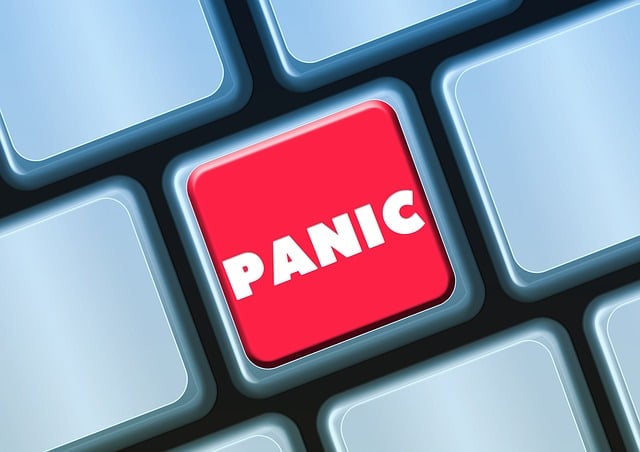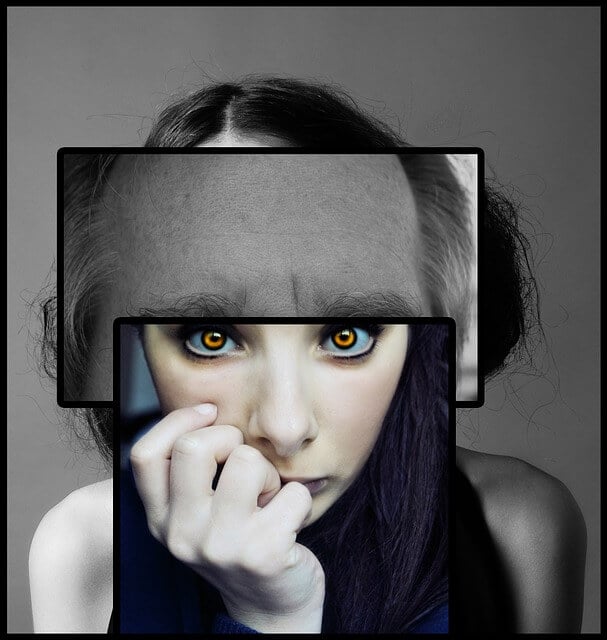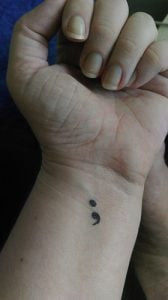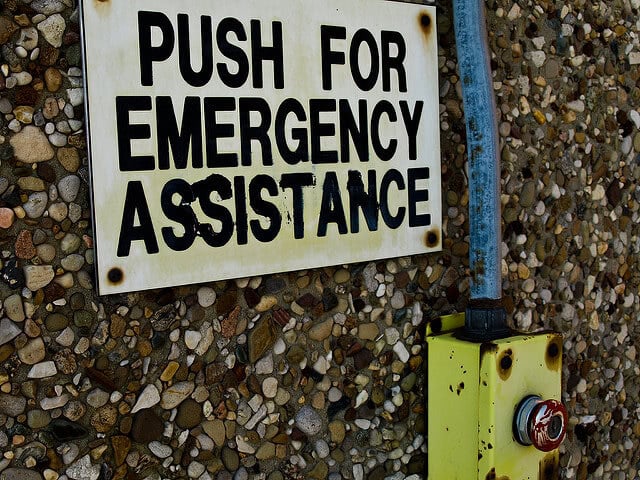Mental health awareness efforts have become common on college and university campuses across the U.S. According to the American Psychological Association, more students are seeking treatment at college counseling centers than ever before. But why is this? Is it because of stress, increased availability of drugs and alcohol, or are we just talking about it more?
A USA Today article (2016) states that 1 in every 12 U.S. college students makes a suicide plan. We created this mental health handbook to assist in awareness efforts. It also serves as a resource for those experiencing mental health issues, or those who have friends or loved ones who have been diagnosed with a mental health disorder.
Consider this your guide to the most common mental health diagnoses on college campuses. The resources that follow are by no means an exhaustive list. Rather, it’s a starting point to help support students.
Addiction

Source: Pixabay user unsplash.
College is a time of newfound freedom for students, but it can also be extremely stressful at times. When we hear “addiction” and “college student” in the same sentence, it often brings to mind a picture of a student who has fallen into the party life and become an alcoholic. However, alcohol isn’t always the drug of choice, and it also isn’t always exciting circumstances (aka, partying) that lead to the addiction.
Here are a few resources for answering the most common questions regarding addiction:
[toggles title=”” disabled=”false” active=”0″ autoheight=”false” collapsible=”true”]
[toggle title=”What does it mean to be addicted to something?”]
The American Psychological Association (APA), defines addiction as a condition in which the body must have a drug to avoid physical and psychological withdrawal symptoms. Addiction’s first stage is dependence, during which the search for a drug dominates an individual’s life. An addict eventually develops tolerance, which forces the person to consume larger and larger doses of the drug to get the same effect.
[/toggle]
[toggle title=”What are symptoms of addiction?”]
Sober College also lists warning signs of substance abuse and addiction on their website. These also include physical and behavioral signs of abuse.
[/toggle]
[toggle title=”What do college students get addicted to?”]
College students aren’t just addicted to drugs and alcohol. Browse through this Guidebook to Addiction on College Campuses for a list of common addictions among college students, as well as warning signs, causes, and also prevention strategies.
[/toggle]
[toggle title=”What supports or resources are available for college students suffering from addiction?”]
addictionblog.org compiled a list of options for college students seeking treatment for addictions. Potential barriers are also discussed.
The Association of Recovery in Higher Education provides a list of colleges and universities that have on-campus recovery resources available.
[/toggle]
[toggle title=”How can you support a friend that is suffering from addiction?”]
The National Institute on Drug Abuse created a guide for those with a friend or loved one who has a substance abuse problem.
[/toggle]
[/toggles]
Anxiety — Generalized Anxiety Disorder (GAD)

Flickr user Maciej Kraus
Society started to use “anxiety” synonymously with “stress”. And considering the circumstances, college is probably the most stressful experience that many students have encountered in their lives. It is, however, important to recognize that being anxious or stressed and have an anxiety diagnosis are very different things.
[toggles title=”” disabled=”false” active=”0″ autoheight=”false” collapsible=”true”]
[toggle title=”What is Anxiety?“]
The American Psychological Association (APA), defines anxiety as an emotion characterized by feelings of tension, worried thoughts, and physical changes like increased blood pressure. People with anxiety disorders usually have recurring intrusive thoughts or concerns. They may avoid certain situations out of worry. They may also have physical symptoms such as sweating, trembling, dizziness, or a rapid heartbeat.
The Anxiety and Depression Association of America provides a comprehensive look at Generalized Anxiety Disorder (GAD), in addition to a chart that shows the difference between every day anxiety and an anxiety disorder. [/toggle]
[toggle title=”How prevalent is anxiety among college students?“]
Psychology Today states that today’s college students are suffering from a mental health crisis. The article states that a 2013 survey indicated that 57% of women and 40% of men reported experiencing “overwhelming anxiety”. [/toggle]
[toggle title=”How can students with anxiety be successful in college?“]
The Americans with Disabilities Act covers anxiety disorders among other disabilities. Thus, it makes you eligible for accommodations in college. HealthCentral has put together a list of college accommodations for students with anxiety disorders. [/toggle]
[toggle title=”What resources are available for students in college with anxiety?“]
Additionally, the Anxiety and Depression Association of America created a list of steps to take if you feel like you or a friend is feeling overwhelmed. This list also includes a number of on- and off-campus resources to take advantage of. Remember, seeking help is a sign of strength, it is not a weakness. [/toggle]
[toggle title=”How to support a friend or loved one with anxiety“]
Teenmentalhealth.org also has a list of things you can do if someone in your life has been diagnosed with GAD.[/toggle]
[/toggles]
[toggles title=”” disabled=”false” active=”0″ autoheight=”false” collapsible=”true”]
Attention Deficit Disorder (ADD) & Attention Deficit Hyperactivity Disorder (ADHD)

Source: Flickr user 125892716@N05.
Many students with ADD or ADHD have been well served by 504 plans during their k-12 education. Accommodations were put in place and teachers were supportive of individual student needs. But college is a different atmosphere, and everything in your life changes at once. Homework is more intense and requires extreme concentration and motivation. Lecture halls can be distracting with no one watching over your shoulder and monitoring your internet browsing.
The good news is, there are supports for students with ADD/ADHD in college–the difference is you have to ask for them.
[toggle title=”What is ADD or ADHD?“]
The American Psychological Association (APA), defines ADHD as a behavioral condition that makes focusing on everyday requests and routines challenging. Symptoms may include trouble getting organized, staying focused, making realistic plans, and impulsivity. Those with ADHD may also be fidgety, noisy, and have a hard time adapting to changing situations. [/toggle]
[toggle title=”How can students with ADD/ADHD be successful in college?“]
Stephanie Sarkis, author of Making the Grade with ADD, created a comprehensive overview of how to succeed in college with ADHD. This resource provides a look at how ADHD changes into adulthood and how it affects life in college. [/toggle]
[toggle title=”What resources do colleges have for students with ADD/ADHD?“]
Ask questions early on to set yourself up for success. During your initial college visits, set up a meeting with someone in the student support services department. Most colleges and universities offer accommodations for students with ADD/ADHD. Visit ADHD & You for a list of accommodations available in college. [/toggle]
[toggle title=”Why should you ask for accommodations in college?“]
Psychology Today also created a list of reasons why students with ADHD need accommodations in college. Remember, it’s better to have the accommodations and not use them than to not have them and need them. [/toggle]
[/toggles]
Bipolar Disorder

Flickr user Jessica Rico
The term “bipolar” is now more common in everyday conversations. Society refers to those who have significant mood swings as “bipolar”. If a person goes between extremes of hot and cold, in terms of their attitude towards others or situations, they are sometimes called “bipolar”. It is important to remember that these terms should not be used loosely or in a derogatory manner. You never know when someone around you is either suffering themselves or has a loved one diagnosed with bipolar disorder.
Here is what you need to know about bipolar disorder, and also what assistance is available in college for those who have been diagnosed.
[toggles title=”” disabled=”false” active=”0″ autoheight=”false” collapsible=”true”]
[toggle title=”What is bipolar disorder?“]
The American Psychological Association (APA), defines bipolar disorder as a serious mental illness in which common emotions become intensely and often unpredictably magnified. Individuals with bipolar disorder can quickly swing from extremes of happiness, energy and clarity, to sadness, fatigue and confusion. These shifts can be so devastating that individuals may choose suicide. All people with bipolar disorder have manic episodes — abnormally elevated or irritable moods that last at least a week and impair functioning. But not all become depressed. [/toggle]
[toggle title=”What are symptoms of bipolar disorder?“]
According to the National Alliance on Mental Illness (NAMI), the average age of onset for bipolar disorder is 25. While it can occur at any time in life, the college years seem to be the prime time for it to appear. A list of symptoms, causes, and treatments can also be found on their site. [/toggle]
[toggle title=”How can students diagnosed with bipolar disorder be successful in college?“]
BP Magazine put together a list of strategies for success for attending college with a bipolar diagnosis.
Health.com has an article titled, “9 Ways to Control Bipolar Disorder”, all of which are applicable to college life. [/toggle]
[toggle title=”What resources are available for students with bipolar disorder?“]
Disability Rights in North Carolina created a great resource titled, “Your Rights in College: Students with Mental Health Impairments”. Its goal is to ease the transition from high school to college. Sample forms are included. [/toggle]
[toggle title=”What to do to support a friend or loved one who has bipolar disorder“]
Teenmentalhealth.org put together a list of things to do if someone in your life has been diagnosed with bipolar disorder. Being well-informed is always the first step. [/toggle]
[/toggles]
Depression

Source: Pixabay user Counselling.
We all go through periods of time where we feel down, that’s normal. With the increase in pressure and expectations (from yourself or others), college can be a rough time if something doesn’t go the way you’d planned.
Here’s what you need to know about depression in college.
[toggles title=”” disabled=”false” active=”0″ autoheight=”false” collapsible=”true”]
[toggle title=”What is depression?“]
The American Psychological Association (APA), defines depression as more than just sadness. People with depression may experience a lack of interest and pleasure in daily activities, significant weight loss or gain, insomnia or excessive sleeping, lack of energy, inability to concentrate, feelings of worthlessness or excessive guilt and recurrent thoughts of death or suicide.
In addition, depression is the most common mental disorder. The good news is, it’s treatable with a combination of medication and therapy. [/toggle]
[toggle title=”What are the symptoms or warning signs?“]
Mentalhealthliteracy.org breaks down the 3 types of depressive disorders (i.e., major depressive disorder (MDD), persistent depressive disorder, and disruptive mood dysregulation disorder), including moods, thought patterns, and body sensations. [/toggle]
[toggle title=”How can students with depression be successful in college?“]
Ulifeline.org recommends that you utilize the health center at your college or university. They can connect you with a therapist or group counseling in the community.
According to healthline.com, Those suffering from depression are also more likely to benefit from exercise, a healthy diet, and getting a sufficient amount of sleep. [/toggle]
[toggle title=”What resources are available for students with depression?“]
Fortunately, there is an abundance of resources available for students suffering from depression. Students Against Depression has a list of ideas and resources in addition to a self-assessment, tips for building a support network, and how counseling can make a difference. [/toggle]
[/toggles]
Eating Disorders

Flickr user daniellehelm
Unfortunately, eating disorders can come in all shapes and sizes, just like the people who suffer from them. Many people are highly concerned with their body image, especially during their young adult years. Distorted thoughts and obsessing over one’s body weight or image can lead to an eating disorder.
[toggles title=”” disabled=”false” active=”0″ autoheight=”false” collapsible=”true”]
[toggle title=”What are eating disorders?“]
The American Psychological Association (APA), defines eating disorders as abnormal eating habits that can threaten your health or even your life.
- Anorexia Nervosa: Individuals believe they’re fat even when they’re dangerously thin and restrict their eating to the point of starvation.
- Click here for symptoms, warning signs, and quick facts
- Bulimia Nervosa: Individuals eat excessive amounts of food, then purge by making themselves vomit or using laxatives.
- Click here for symptoms, warning signs, and quick facts
- Binge Eating: Individuals have out-of-control eating patterns, but don’t purge.
- Click here for symptoms, warning signs, and quick facts
[/toggle]
[toggle title=”How can students with eating disorders be successful in college?“]
When on the road to recovery, college cafeteria’s can be quite daunting. Eating Disorder Hope has an article on how to handle meals in a dorm cafeteria.
Creating a college contract may be the way to go. Mirror-Mirror lists the necessary pieces of this contract. [/toggle]
[toggle title=”What resources are available for students with eating disorders in college?“]
Eating Disorder Hope also provides a list of therapy and treatment types on their website.
Mirror-Mirror recommends making an appointment with the health services located on campus. They can help you find treatment and/or counseling in the area. [/toggle]
[toggle title=”How to support a friend or loved one who has an eating disorder“]
The National Eating Disorder Association has a webpage devoted to assisting friends and loved ones with eating disorders. [/toggle]
[/toggles]
Obsessive-Compulsive Disorder (OCD)

Source: Flickr user aquamech-utah.
According to Beyond OCD, approximately 1 in 40 adults in the U.S. has OCD. Generally, when picturing someone with OCD, you think of a person that is highly organized and likes having every moment of their day scheduled. That’s not an entirely accurate representation, so here’s what you should know.
[toggles title=”” disabled=”false” active=”0″ autoheight=”false” collapsible=”true”]
[toggle title=”What is OCD?“]
The National Institute of Mental Health (NIMH) defines obsessive-compulsive disorder as a common, chronic and long-lasting disorder in which a person has uncontrollable, reoccurring thoughts (obsessions) and behaviors (compulsions) that he or she feels the urge to repeat over and over.
The ADAA goes further and states that many people who have OCD realize that their obsessions and compulsions are irrational, but feel powerless to stop them. [/toggle]
[toggle title=”How can students with OCD be successful in college?“]
If you have or had a 504 plan in high school, talk to the student disability services department on campus. See what accommodations you may be eligible for. [/toggle]
[toggle title=”What resources are available for students with OCD in college?“]
Beyond OCD has put together a comprehensive handbook for college students with OCD. [/toggle]
[toggle title=”How to support a friend or loved one who has OCD“]
Teenmentalhealth.org provides readers with a list of things you can do if someone in your life has been diagnosed with OCD. [/toggle]
[/toggles]
Panic Disorder

Source: Pixabay user geralt.
According to the American Psychological Association (APA), about 1 in every 75 people suffers from panic disorder, and it usually starts during the teenage years or early adulthood.
[toggles title=”” disabled=”false” active=”0″ autoheight=”false” collapsible=”true”]
[toggle title=”What is a panic disorder?“]
In order to be diagnosed with a panic disorder, one must suffer from panic attacks for no obvious reason. Yes, panic attacks are also associated with anxiety, but the difference is here is the lack of preceding experiences–these panic attacks happen out of the blue. [/toggle]
[toggle title=”How can students with panic disorder be successful in college?“]
Panic disorder can be managed with therapy and medication. Talk to your doctor and make sure your meds are working for you before transitioning to college. Keep in mind that the added stress that college brings may also require you to change medications. [/toggle]
[toggle title=”What resources are available for students with panic disorder in college?“]
The Anxiety and Depression Association of America (ADAA) recommends that if you had an IEP or 504 in high school, talk to someone in the student disability services department about carrying those accommodations over to college. [/toggle]
[toggle title=”How to support a friend or loved one who has panic disorder or who is having a panic attack“]
The Anxiety and Depression Association of America (ADAA), provides a list of panic attack symptoms. If you know someone who has been diagnosed with panic disorder, be sure to familiarize yourself with this list and watch for the warning signs.
teenmentalhealth.org provides a list of steps to take if you’re around a person currently having a panic disorder. [/toggle]
[/toggles]
Schizophrenia

Source: Pixabay user geralt.
Schizophrenia is a mental disorder that usually develops during late adolescence or young adulthood. People with schizophrenia have a hard time distinguishing between what is real and what is not, even when confronted with proof.
[toggles title=”” disabled=”false” active=”0″ autoheight=”false” collapsible=”true”]
[toggle title=”What is schizophrenia?“]
The American Psychological Association (APA), defines schizophrenia as a serious mental illness characterized by incoherent or illogical thoughts, bizarre behavior and speech, and delusions or hallucinations, such as hearing voices. Schizophrenia typically begins in early adulthood. [/toggle]
[toggle title=”How can students with schizophrenia be successful in college?“]
Schizophrenia has a high rate of comorbidity, meaning that the individual is often diagnosed with another mental health disorder or a learning disability. Know what accommodations you have available to you, and talk with someone at your college/university to make sure your needs are being met.
Meet with your doctor and find out what medications are available to help manage your symptoms. Before leaving for college, or as soon as you’re diagnosed, create a comprehensive treatment plan with your physician. [/toggle]
[toggle title=”What resources are available for students with schizophrenia in college?“]
Use stress-reduction interventions. Stress will often increase schizophrenia symptoms, so find a few stress-relievers that work for you, whether that be yoga, coloring, or Netflix.
If you’ve moved away from home, and therefore away from your therapist, visit the health services office on campus to learn about therapy options in the community. [/toggle]
[toggle title=”How to support a friend or loved one who has schizophrenia“]
Helpguide.org has created a list of tips for helping a family member or loved one who has schizophrenia.
UniversityParent.com has a list of ways parents can help their college students who have been diagnosed with schizophrenia. [/toggle]
[/toggles]
Self-Injury

Flickr user Evamaria
Those who participate in self-injurious behaviors aren’t necessarily suicidal, contrary to popular belief. In fact, it is sometimes referred to as “non-suicidal self-injury” (NSSI). They are simply trying to relieve the pain that they feel inside. For some, it is symbolic and reduces anxiety/tension, sadness/loneliness, anger, or numbness.
College is a time of high stress for some students, which then may lead some students to self-injure.
[toggles title=”” disabled=”false” active=”0″ autoheight=”false” collapsible=”true”]
[toggle title=”What are self-injurious behaviors?“]
teenmentalhealth.org provides a list of self-injurious behaviors which include, but are not limited to: burning and hitting oneself, scratching or picking at scabs (to prevent wounds from healing), overdosing on medications, pulling out one’s hair, eyelashes, eyebrows with intent to harm oneself, or inserting objects into one’s body. The most common form of self-harm, however, is cutting the skin with razor blades. [/toggle]
[toggle title=”How can students who self-injure be successful in college?“]
Stress-reduction might be key. Find something that works for you–even if it means trying a handful of things that don’t work first.
Intervention ideas include relaxation techniques such as guided imagery, progressive muscle relaxation, or deep breathing exercises. [/toggle]
[toggle title=”What resources are available for students who self-injure in college?“]
Seeking help: Meet with the student health services department. They can either direct you to counseling services or a support group in the area.
Talk to your RA, advisor, or someone else you trust. The best way to prevent these behaviors is to have a good support network. [/toggle]
[toggle title=”How to support a friend or loved one who participates in self-injurious behaviors“]
teenmentalhealth.org also provides advice to those who have a friend or loved one who self-harms.
Mental Health America also lists ways you can help a friend who is self-harming. [/toggle]
[/toggles]
Social Anxiety Disorder (SAD)

Source: Flickr user 00826.
According to the National Institute of Mental Health, social anxiety disorder usually begins in childhood or early adolescence. Attending class can be a terrifying experience for students with a social anxiety disorder. Just the idea of being called on can send a student into panic mode.
[toggles title=”” disabled=”false” active=”0″ autoheight=”false” collapsible=”true”]
[toggle title=”What is social anxiety disorder?“]
The Mayo Clinic defines social anxiety disorder as a chronic mental health condition characterized by significant anxiety, fear, self-consciousness, and also embarrassment in everyday interactions due to a fear of being scrutinized or judged by others. [/toggle]
[toggle title=”How can students with social anxiety disorder be successful in college?“]
Treatment, including counseling, medication, and learning coping skills, can help individuals suffering from social anxiety disorder be successful at completing regular, everyday tasks.
BuzzFeed also posted an article in 2015 titled, “25 things every college student should know about dealing with social anxiety“. Slowly, but surely, society is normalizing and accepting anxiety. [/toggle]
[toggle title=”What resources are available for students with social anxiety disorder in college?“]
LearnPsychology has also created a student guide to surviving stress and anxiety in college and beyond.
Social Anxiety Association has also identified Cognitive Behavioral Therapy as the preferred theory for working with individuals with SAD. Talk to your health services center to find a counselor on campus or in the area to work with. [/toggle]
[toggle title=”How to support a friend or loved one who has a social anxiety disorder“]
teenmentalhealth.org provides a list of tips for supporting a friend or loved one who has been diagnosed with social anxiety disorder.
SAD can interfere with daily routines, work, social life, school, friendships, and also romantic relationships. Remember, it’s not their fault–continual support is what they need. [/toggle]
[/toggles]
Suicide

Source: Flickr user randomhero1218.
According to ULifeline, suicide is the second leading cause of death among college students. In addition, in almost all of these cases, the person was suffering from a mental illness or disorder.
Suicide Helpline states that people turn to suicide when their emotional pain overwhelms their coping resources. Suicide is felt most often when people are in the depths of depression…
[toggles title=”” disabled=”false” active=”0″ autoheight=”false” collapsible=”true”]
[toggle title=”What resources are available for students who are suicidal in college?“]
The JED Foundation has compiled a list of resources available to students.
Psychology Today published an article titled, Fighting Suicidal Thoughts.
The Mayo Clinic has created a list of coping and support resources. [/toggle]
[toggle title=”How to support a friend or loved one who might be suicidal“]
Be aware of the signs and symptoms and don’t be afraid to take action.
Asking if someone is contemplating suicide will not prompt the idea or plant the idea in their mind. If you are worried about someone, always ask.
If you are feeling helpless and thinking about suicide, tell someone. Please reach out for help.
- National Suicide Prevention Lifelife 1 (800) 273-8255
- List of State Suicide Hotlines in the U.S.
- National Youth Crisis Hotline (800) 442-HOPE
[/toggle]
[/toggles]






